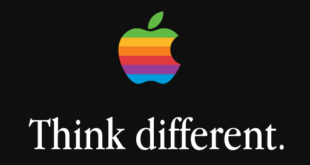[ad_1]

When it comes to new generations – the so-called Millennials and Gen-Z’ers – employees are looking for something new, explains Wendy Mars, President of Cisco’s Europe, Middle East, Africa and Russia business.
“If you look to the Millennial community, it’s not just about working for a large corporate, and the financial results or financial returns for them,” she says. “They want purpose, [and to do something] personally important for them. And I think being able to exhibit that as an organisation is fundamental.”
That is partly down to the ability of leaders and managers to convincingly convey a meaningful sense of purpose. But it is also about investing in corporate social responsibility initiatives – for instance, Cisco allows its employees to invest time in causes of their choice with five days a year paid volunteering – and building a respectful, collaborative and stimulating workplace culture.
Cisco’s own culture has risen to quasi-legendary status – leading to the organisation being awarded the title of World’s Best Workplace. Cisco’s culture is structured along six principles emphasising diversity, accountability, and cooperation. More in general, Cisco’s is often labelled a “conscious culture”, where both managers and employees aim at being a fully-invested part of the wider company environment – embracing accountability, mutual respect, and empathy.
“My favorite [principle] is called ‘give your ego a day off’,” Mars says. “There’s no need for big egos: no matter what level a person is in the company, we are all in together.”



The next big challenge now for Cisco – and for every company – is blending culture with emerging tech in a virtuous loop . The evolution of internet architecture and the rise of new technologies is upending many of the assumptions companies had been predicating their internal culture on. Working remotely – on the move, from home, or even from another country – has never been easier; AI tools allowing for simultaneous translation effectively eliminate language barriers; cloud computing has opened the door to smooth, frictionless collaboration.
“With the advent of video conferencing and of devices that allow you to whiteboard and ideate, you’re able to bring different together time zones, organisational units and diversities – and you can have the same level of conversation,” explains Sri Srinivasan, Senior Vice President and General Manager for the Team Collaboration Group at Cisco. “The dissonance of technology is dissipating at an extremely rapid pace. You can have that conversation easily when people are sitting in their living room, from the office, whenever it suits them.”
Such advances are bound to reflect on the way culture is structured. “When I think about the way in which the workplace of the future will evolve – it will be one where it doesn’t matter necessarily geographically where you’re based, what country or background you’re from, if you can use the technology in a way whereby you’re [effectively] sitting in the same room with each other,” Mars says. “And as technology continues to evolve, areas that have been traditionally very silent, will not be like that anymore. The importance of cross-pollinating around new areas and learning from different people that aren’t necessarily just in your silo is a big part of it as well.”
“[What is important] is making sure everyone feels included and participates in the creation of the strategy – and its execution,” says Srinivasan. “We use our collaboration technology, devices, and apps to bring all the people within an organisation together. “
Over time, a third element will join the technology-culture dyad, and start playing an essential role in the way organisations function: the physical workplace itself. Devices, applications, and networks will work in concert to create smart offices that are attuned with the wider company culture. Environment-conscious Millennials and Zoomers will be able to interact with their workplace in a way that furthers their ideals.



“Why do you need to have lights and heating or technology on in a room that you’re not going to be in? We can make sure that you’re efficiently using your space in this situation and saving power and the environment when you don’t need them,” Mars says. “If you have the smarts and the data on your workplace environments, you can massively help towards the creation of a smart building and advance a sustainability argument as well.”
If a company is ready to embrace that change – and make sure that their culture and technology are fine-tuned enough and working in concert to help their employees thrive – that is great news for them. But stakes couldn’t be higher for those who haven’t upped their game – and it is not only about their inability to attract new talent.
“If you don’t have a culture where people feel valued, they feel appreciated, they feel that they’re making a difference, they will leave,” Mars says. “Good people will leave.”
—
For more information on Cisco’s approach to culture click here.
Source link
Top Tech Stories
 Epic Heroes Entertainment Movies Toys TV Video Games News Art Pop culture news goodness
Epic Heroes Entertainment Movies Toys TV Video Games News Art Pop culture news goodness




